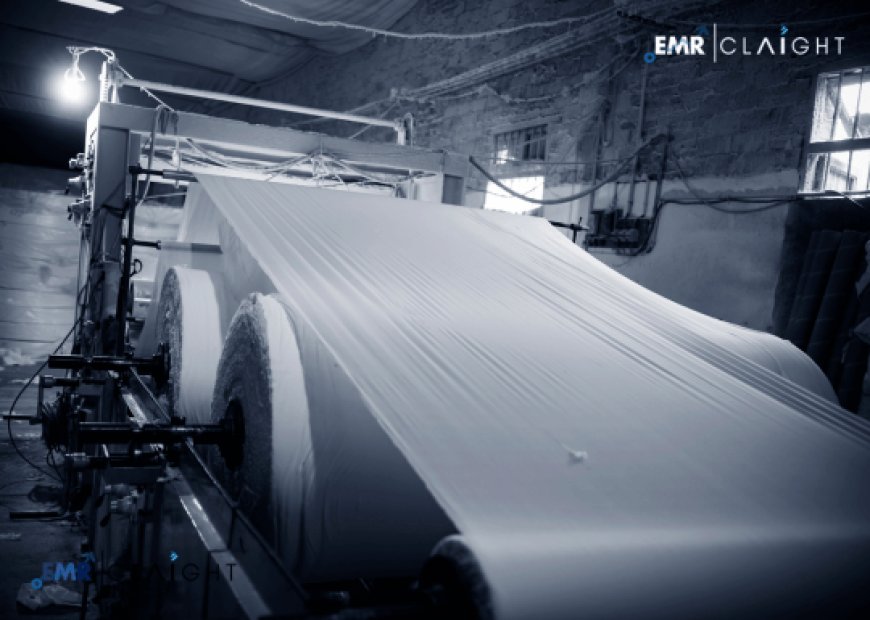South Korea Pulp and Paper Market Size & Share | 2034
South Korea's pulp and paper market is driven by packaging demand, digitalization impact, and growing focus on sustainable paper products.

According to recent industry insights, the South Korea pulp and paper market is poised for steady expansion in the coming years. The market is anticipated to grow at a compound annual growth rate (CAGR) of 5.20% between 2025 and 2034, reaching a projected value of over USD 13.92 billion by 2034. This growth is primarily fuelled by increasing consumer demand for sustainable and eco-friendly packaging, alongside a revival in industrial and commercial paper consumption.
The pulp and paper industry in South Korea plays a significant role in the country's economy, with applications across packaging, printing, publishing, education, and hygiene sectors. As the country transitions towards sustainable development goals and environmentally responsible consumption, the market is seeing a shift from traditional paper products to recycled and bio-based alternatives.
South Korea Pulp and Paper Market Size
As of 2024, the South Korea pulp and paper market represents a well-established sector, supported by a robust manufacturing infrastructure, high literacy rate, and widespread use of paper-based packaging in consumer goods. Driven by rising environmental awareness and growing demand for paper in packaging applications, the market is expected to record consistent growth over the forecast period, crossing the USD 13.92 billion mark by 2034.
Both domestic consumption and export opportunities are contributing to the growth of the market. Key industry players are increasingly investing in capacity expansion, innovation in paper quality, and recycling technologies to meet the evolving demands of the market.
South Korea Pulp and Paper Market Share
Within the South Korean pulp and paper sector, the packaging paper segment holds the dominant share, driven by the expansion of e-commerce, retail, and food delivery services. Corrugated boards, kraft paper, and cartonboard are particularly in high demand due to their strength, durability, and recyclability.
Access Your Free Sample Report
Printing and writing paper also maintain a notable share, especially in educational institutions, government offices, and commercial printing. However, this segment is gradually witnessing a decline due to digitalisation trends. On the other hand, the tissue and hygiene paper segment is experiencing moderate growth, fuelled by rising health awareness and consumer preferences for premium sanitary products.
Leading players in the market include both domestic producers and international manufacturers, many of which are focusing on sustainable practices and product innovation to strengthen their market position.
South Korea Pulp and Paper Market Trends
The South Korea pulp and paper market is evolving rapidly, shaped by several emerging trends:
-
Eco-Friendly Packaging: One of the most prominent trends is the growing preference for biodegradable and recyclable packaging materials. Companies are shifting towards using paper-based alternatives over plastic, particularly in food and retail sectors.
-
Digital Transformation: While digitisation poses a challenge to traditional paper usage, it is also enabling smarter manufacturing processes. Advanced automation, AI-driven quality checks, and data analytics are being increasingly adopted by paper manufacturers to optimise production and reduce waste.
-
Recycled Paper and Pulp: The emphasis on circular economy is encouraging the use of recycled paper and wastepaper in the production process. This trend is supported by strong regulatory backing and increasing consumer inclination towards environmentally conscious products.
-
Premium and Specialty Papers: With rising disposable incomes and changing consumer preferences, there is a growing demand for premium-quality stationery, coated papers, and specialty packaging for cosmetics, electronics, and luxury goods.
Drivers of Growth
Several key factors are driving the growth of the South Korea pulp and paper market:
-
Sustainability and Environmental Awareness: Heightened public awareness of environmental issues and plastic pollution is encouraging consumers and businesses to adopt paper-based alternatives. Government initiatives supporting green packaging are further catalysing this shift.
-
E-commerce and Logistics Expansion: The boom in e-commerce, especially post-COVID-19, has significantly increased the demand for corrugated boxes and flexible packaging materials, providing a major boost to the pulp and paper industry.
-
Urbanisation and Changing Lifestyles: Rapid urbanisation, growing middle-class population, and evolving consumer habits are contributing to higher consumption of tissue products, paper towels, and personal hygiene papers.
-
Government Regulations: Stringent government regulations on plastic use, waste management, and emissions control are promoting the use of recyclable and renewable materials such as paper.
-
Technological Advancements: Innovations in pulping technology, bleaching processes, and energy-efficient machinery are enhancing the production capabilities and environmental performance of paper mills across South Korea.
Technology and Advancement
Technology is playing a transformative role in the South Korea pulp and paper industry. Automation and AI integration in manufacturing processes are improving productivity, reducing operational costs, and ensuring consistent product quality. Moreover, advanced wastewater treatment systems and energy recovery technologies are helping companies meet strict environmental compliance standards.
Emerging technologies in chemical pulping and mechanical refining are allowing manufacturers to produce stronger and lighter paper, reducing material consumption and enhancing product performance. Additionally, digital print technologies are enabling customised and short-run printing, especially valuable in packaging and promotional materials.
South Korea is also seeing advancements in bio-based packaging and fiber-based alternatives to plastic, driven by collaborative research between academic institutions and industry players.
Competitive Landscape
Some of the major players explored in the report byExpert Market Research are as follows:
- Moorim Paper Co., Ltd
- Hankuk Paper Mfg.Co.Ltd
- Hansol Paper., Ltd.
- Jinju Paper Mfg.Co.,Ltd
- Asia Pulp & Paper (APP) Sinar Mas.
- Others
Challenges and Opportunities
While the South Korea pulp and paper market holds promising growth potential, it also faces certain challenges:
-
Declining Demand for Print Media: The increasing shift to digital communication is reducing the demand for newsprint and writing paper, posing a challenge for traditional segments of the market.
-
Raw Material Dependence: South Koreas limited forest resources make it highly reliant on imported wood pulp, making the industry vulnerable to global price fluctuations and supply chain disruptions.
-
Environmental Regulations: Compliance with strict environmental norms can increase operational costs for manufacturers, especially in terms of emissions control, waste management, and water usage.
-
Competition from Digital Alternatives: Growing digitalisation across education, government, and corporate sectors continues to impact paper consumption negatively.
Despite these challenges, the market offers several opportunities:
-
Recycling and Wastepaper Utilisation: Investing in domestic recycling infrastructure can reduce import dependency and enhance sustainability.
-
Smart Packaging Solutions: The integration of QR codes, smart labels, and interactive packaging can open up new avenues for innovation in the paper packaging segment.
-
Export Opportunities: South Korean manufacturers can explore export markets for specialty paper and eco-friendly packaging, especially in regions with increasing demand for sustainable products.
-
Product Innovation: Development of novel paper products such as water-resistant papers, antimicrobial tissue, and multifunctional packaging can cater to emerging consumer needs.
South Korea Pulp and Paper Market Forecast
Looking ahead, the South Korea pulp and paper market is expected to maintain a steady growth trajectory through 2034. With a projected CAGR of 5.20%, the industry is likely to reach a value exceeding USD 13.92 billion by the end of the forecast period.
The increasing demand for sustainable packaging solutions, coupled with technological advancements and supportive regulatory frameworks, will continue to drive the industry forward. Key growth segments will include packaging paper, hygiene paper, and recycled products, while innovation in specialty paper and smart packaging will further enhance market dynamics.
As South Korea strengthens its focus on eco-friendly development and digital transformation, the pulp and paper market is well-positioned to evolve in alignment with global sustainability trends and consumer expectations.
































